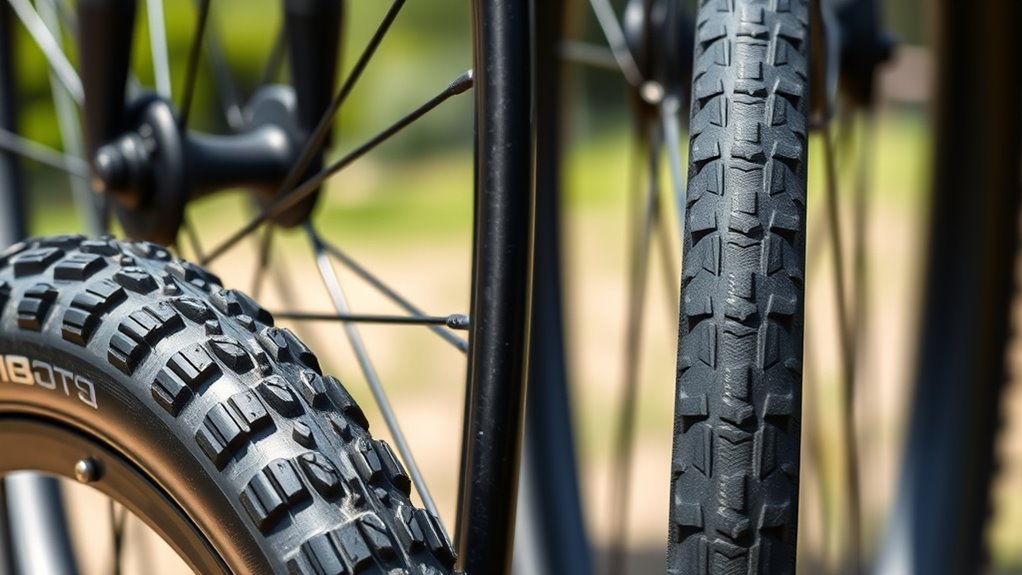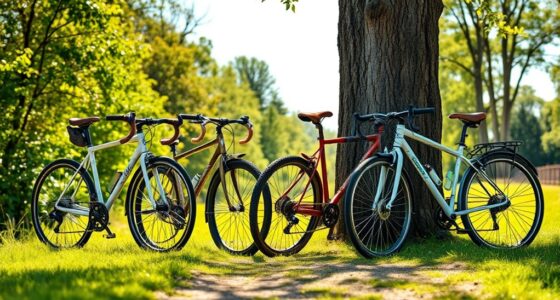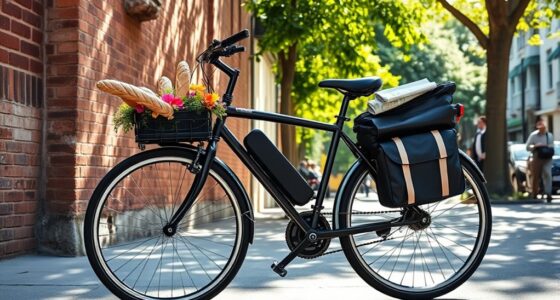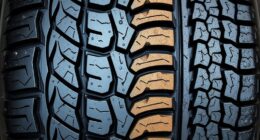Choosing between tubes and tubeless depends on your riding style and terrain. Tubeless tires reduce flats, improve ride quality, and can seal small punctures quickly, making them ideal for rough or mountain trails. However, they require proper rim compatibility and maintenance. Tubes are simpler to install and repair but are more prone to flats. To discover which system fits your needs best and learn essential tips, continue exploring the key differences and use cases.
Key Takeaways
- Tubeless tires reduce flat risks and allow quick repairs with sealant, ideal for rough terrain and long rides.
- Traditional tubes are simpler to install and repair but are more prone to punctures and flats.
- Tubeless setups require proper rim compatibility and sealant maintenance, offering better performance once installed.
- Tubes are cost-effective, easier for beginners, and suitable for casual or urban riding.
- Tubeless tires offer lower maintenance and fewer flats, making them preferred for serious cyclists and off-road use.
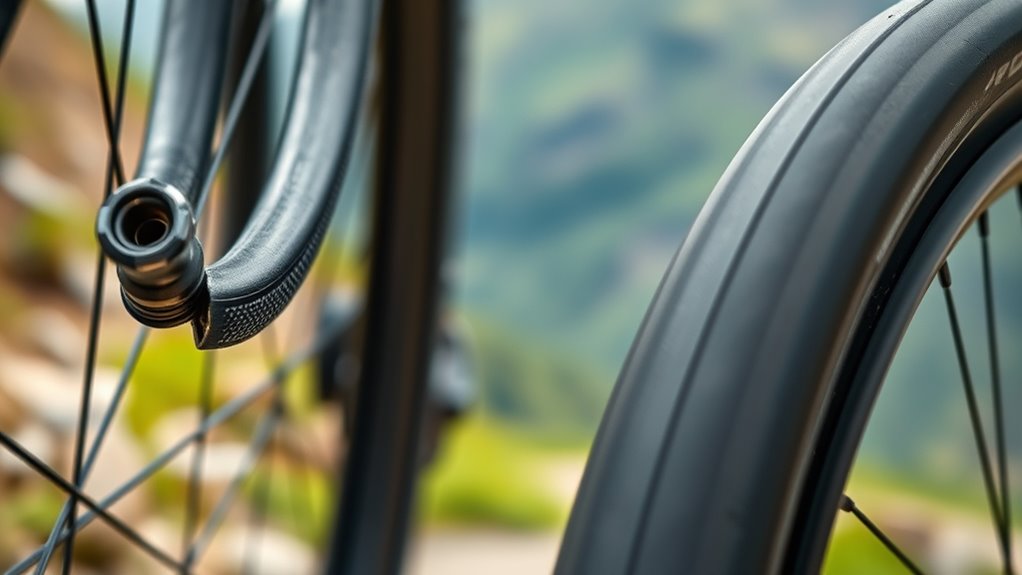
When choosing between tubes and tubeless tires, understanding their differences can help you make the best decision for your biking needs. Tubeless tires eliminate the need for an inner tube, relying instead on a tight seal direct to the rim. This setup reduces the risk of pinch flats and makes tire puncture repair easier since you can often fix small punctures with sealant rather than removing the tire completely. On the other hand, traditional tube setups require a separate inner tube that can be punctured, but they’re generally simpler to install and repair. If you’re considering tubeless tires, you’ll need to verify your rim can accommodate a rim strip installation, which creates an airtight seal between the rim and tire. Proper rim strip installation is vital because it prevents air leaks and helps maintain consistent pressure. Additionally, selecting the right bedroom setup can enhance your overall riding experience by ensuring comfort and functionality during your rides.
When a puncture occurs in a tubeless tire, you can often seal it quickly using a tubeless-specific sealant. This liquid rubber-like substance coats the inside of the tire and plugs small holes, letting you keep riding without removing the tire. But if the puncture is too large or the sealant fails, you might need to perform tire puncture repair by removing the tire, applying a plug or patch, and reseating it on the rim. This process is more involved compared to simply replacing a tube, but it’s a valuable skill that can save you time and money. With tubes, puncture repair usually involves locating the leak, inflating the tube, and patching or replacing it. Installing a new tube is straightforward, but you should also be mindful of rim strip installation, as a damaged or improperly fitted rim strip can cause leaks or flat tires.
Frequently Asked Questions
How Do Tubeless Setups Impact Bike Weight Compared to Traditional Tubes?
You’ll find tubeless setups generally lighten your bike compared to traditional tubes, boosting riding efficiency. Without the extra weight of tubes, your wheels become more responsive, and the setup often simplifies maintenance. Although initial installation might be trickier, the overall weight savings can improve handling and reduce fatigue during long rides. So, if you want a sleeker, more efficient ride, going tubeless is a smart choice.
Can Tubeless Tires Be Used With All Rim Types and Wheel Sizes?
Yes, tubeless tires can be used with most rim types and wheel sizes, but you need to check rim compatibility and tire sizing carefully. Some rims are specifically designed for tubeless setups, ensuring a secure fit and proper seal. Don’t assume all wheels are compatible—verify that your rim profile supports tubeless use to avoid leaks or safety issues. The right combination *releases* smoother rides and fewer flats, so choose wisely.
What Are the Best Maintenance Practices for Tubeless Systems?
To keep your tubeless system in top shape, regularly check the tire sealant’s longevity and top it off every few months, especially in dry conditions. Always inspect and tighten the valve core to prevent leaks, and clean it if needed. Also, verify your rim tape is intact and properly seated. These simple steps help maintain peak performance and avoid unexpected flats or pressure loss.
Are Tubeless Tires More Prone to Sudden Deflation Than Tube Tires?
Ever wondered if tubeless tires are more prone to sudden deflation? They can be, especially with sharp punctures that cause instant deflation, as there’s no inner tube to contain the air. While tubeless systems are designed to resist punctures better, they still carry puncture risks, and a damaged seal can lead to unexpected loss of air. Proper maintenance and quick repairs help minimize these risks, keeping you safe on your ride.
How Does the Cost of Tubeless Conversion Compare Over Time?
Converting to tubeless tires can be a smart long-term investment, offering cost savings over time. While the initial setup may be higher due to sealing liquids and rims, you’ll save money on tubes and puncture repairs in the long run. Plus, fewer flats mean less hassle and expense. Over time, the durability and reduced maintenance make tubeless conversion a cost-effective choice for most riders.
Conclusion
So, whether you choose tubes or go tubeless, remember that each has its quirks and benefits. It’s almost amusing how the “better” option can come with unexpected headaches, reminding you that no setup is perfect. In the end, your choice might just reflect your patience or your willingness to accept surprises. After all, cycling’s unpredictability is what keeps it interesting—whether you’re riding on tubes or floating tubeless.
